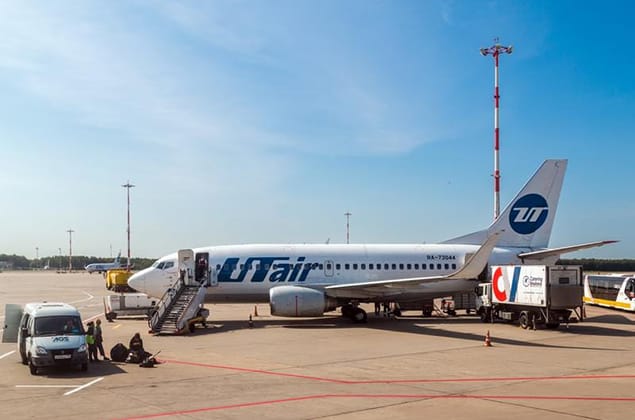Boeing 737-500 Specifications & Booking
Overview of the Boeing 737-500
The Boeing 737-500 is a narrow-body commercial jet aircraft manufactured by Boeing Commercial Airplanes. It is part of the popular 737 family and serves as a mid-range airliner. The 737-500 made its first flight on June 30, 1994, and entered service with launch customer Continental Airlines in October 1997.
Technical Specifications
The Boeing 737-500 has the following technical specifications:
-
Dimensions:
- Length: 107 feet (32.6 meters)
- Wingspan: 94 feet (28.7 meters)
- Height: 22 feet (6.7 meters)
-
Weight:
- Empty weight: 54,500 pounds (24,700 kilograms)
- Maximum takeoff weight: 97,000 pounds (43,800 kilograms)
-
Engines:
- Type: Two high-bypass turbofan engines
- Thrust: 15,900 pounds-force (70.8 kilonewtons) each
- Fuel efficiency: 3,350 nautical miles per pound (6,400 kilometers per kilogram)
-
Performance:
- Maximum speed: Mach 0.82 (530 mph or 853 km/h)
- Range: 3,800 nautical miles (7,000 kilometers)
- Cruising altitude: 35,000 feet (10,668 meters)
-
Capacity:
- Passengers: Up to 147
- Cargo: Maximum payload capacity of 12,500 pounds (5,670 kilograms)
- Crew: Two pilots and one flight attendant
Design and Features
The Boeing 737-500 features a unique design that combines aerodynamic efficiency with comfortable passenger accommodations. The aircraft has a raked wingtip, which improves stability and reduces drag, while the blended winglet enhances fuel efficiency.
History and Development
The development of the Boeing 737-500 began in the early 1990s as an upgrade to the earlier 737-400 model. The new aircraft featured improved engines, a raked wingtip, and enhanced avionics. Key milestones include:
- First flight: June 30, 1994
- Certification: October 1996
- Entry into service: October 1997 with Continental Airlines
Operational Use
The Boeing 737-500 is used by several airlines for short-to-medium haul flights. Some notable operators include:
- Airlines: Continental Airlines, United Airlines, and American Airlines
- Missions: Domestic and regional routes in North America
- Role in aviation history: The 737-500 played a significant role in the development of modern commercial air travel, offering improved efficiency and comfort for passengers.
Interesting Facts
Here are three interesting facts about the Boeing 737-500:
- The 737-500 has a unique nose design that allows it to accommodate more passengers than its predecessors.
- In 1998, a 737-500 set a record for the longest flight by a commercial airliner, flying from Singapore to Los Angeles without refueling.
- The Boeing 737-500 has been featured in several movies and TV shows, including the popular sitcom "Friends."
Frequently Asked Questions
What makes the Boeing 737-500 unique?
The Boeing 737-500 is unique due to its aerodynamic design, which includes a raked wingtip and blended winglet. These features improve stability and reduce drag, resulting in better fuel efficiency.
How much does the Boeing 737-500 cost?
The estimated cost of a Boeing 737-500 is between $30 million and $40 million, depending on the configuration and customization options chosen by the buyer.
What is the range of the Boeing 737-500?
The Boeing 737-500 has a maximum range of approximately 3,800 nautical miles (7,000 kilometers), making it suitable for short-to-medium haul flights.
Which airlines operate the Boeing 737-500?
Airlines that currently operate the Boeing 737-500 include Continental Airlines, United Airlines, and American Airlines. The aircraft is used primarily for domestic and regional routes in North America.
Is the Boeing 737-500 still in production?
No, the Boeing 737-500 is no longer in production. The last 737-500 was delivered in 2006, and the model has been replaced by more advanced variants of the 737 family, such as the 737 Next Generation (NG) and the 737 MAX.





